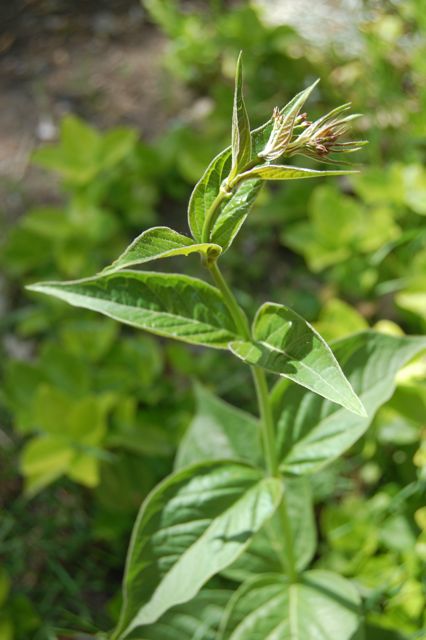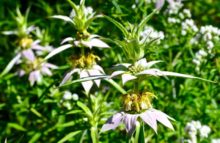 For some years now, Toronto’s meadows, ravines, valleys and now, it seems, gardens have been increasingly blighted with a green pestilence: Dog-strangling vine (Vincetoxicum rossicum).
For some years now, Toronto’s meadows, ravines, valleys and now, it seems, gardens have been increasingly blighted with a green pestilence: Dog-strangling vine (Vincetoxicum rossicum).
You can see it growing in eerie symmetry on the slopes by the Don Valley Parkway, to about a foot in height. Then, it starts to twine; with each other, up shrubs and and trees and hapless wildflowers.
About now (early June) it starts with its rather insignificant pinkish-brown flowers. Once fertilized, the plant makes narrow pods that will later release milkweed-like puffy airborne seeds. It is a cousin of the common milkweed.
What’s so insidious is that it’s almost unstoppable. It reproduces by seed; many seeds per plant. It reproduces by runners under the soil. Trying to yank it up through weeding can cause breaks in the root system – and each break can encourage a new growth top. It can cover large areas in a scarily short time.
The problem isn’t restricted to Toronto. Ottawa has had its own invasion, as described in this article from the Fletcher Wildlife Garden and this one from Carleton University.
If you find dog-strangling vine in your garden, don’t let it get a toe-hold. The best, most earth-friendly thing to do is to cut the stem(s) off at, or just below, the soil level. Do not let it reach the fruiting stage; do not compost the roots or seed pods. If you see it in a neighbour’s garden, give them a word to the wise.
This one is worse than the Lythrum scare of a few years ago. At least Lythrum, AKA purple loosestrife, has redeeming qualities – for one, it’s pretty. But both plants are choking out our native wildflowers. And dog-strangling vine can grow anywhere, sun, shade, cracks in the sidewalk; anywhere; not only in marshlands.
Get worried. Get informed. Please do your best to do something about it.




